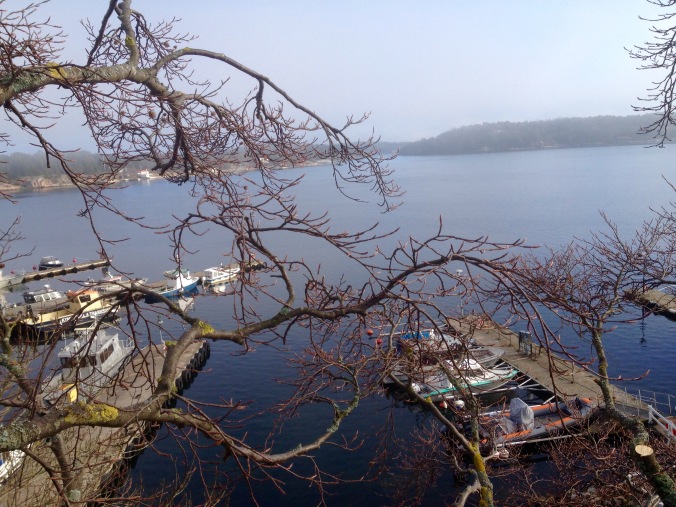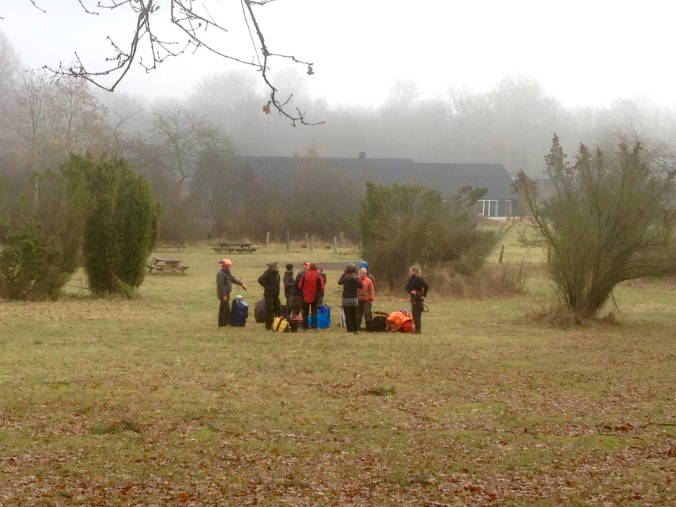
Last weekend I went to Denmark to meet arborist from Sweden, Denmark, Germany and England. I had my workshop on single/stationary rope work climb – safety and rescue.It went well but my battery went out so I didn’t get so many pictures.
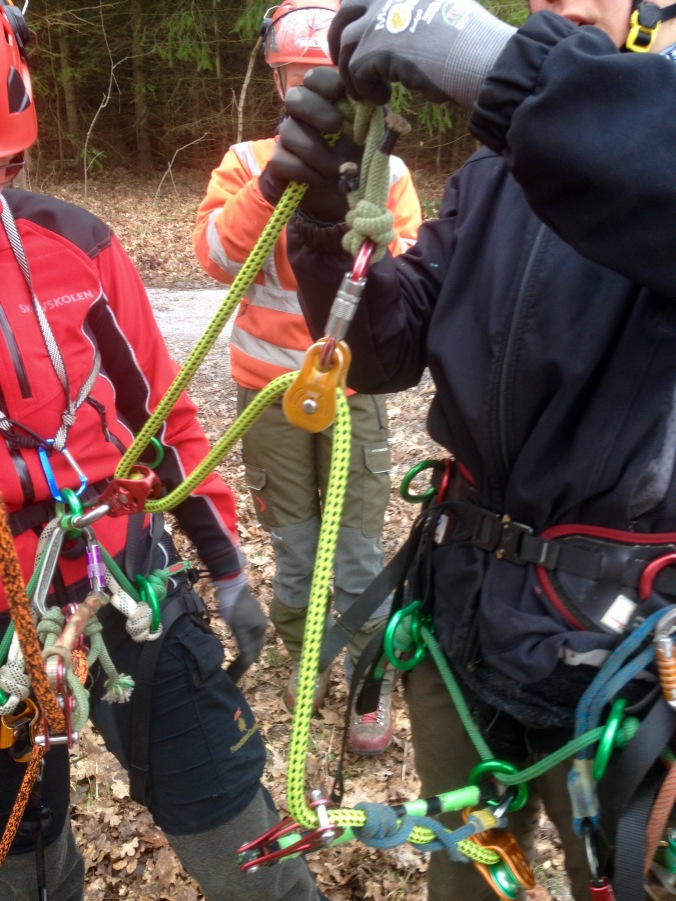
This picture above is supposed to show a pickup rescue (using only your own rope). Casualty to the left is attached to a pulley that sits above the climbers system. (remember to lanyard in and pull slack out above your system to do this set up). This way it’s also a bit easier to lift the casualty. We found out that it is much heavier to lift someone that climbs on stationary rope.
I got so much great help and advices for this workshop of Boel Hammarstrand how also had a workshop the day before on the stationary rope climbing technique. 
Louise Grønbæk was arranging the whole event and also organised our first climb together, guest books were put up in the tree, and we climbed out to them to write greetings.
Iben Thomsen, scientist and writer, did an interesting speech about the trees cambium. She explained why a tree with strangled cambium can look well for 20 years and then suddenly die
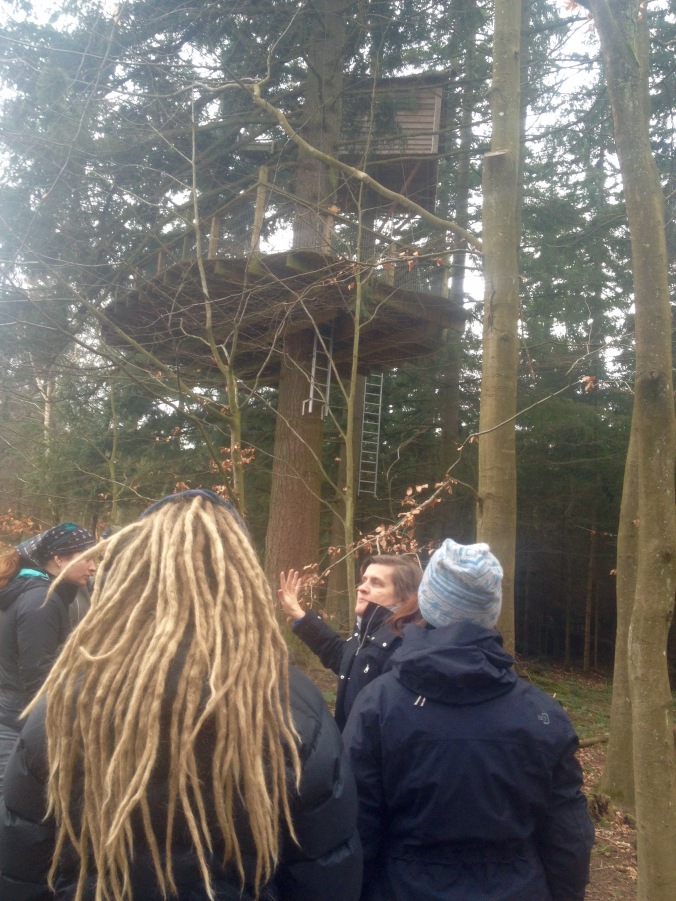
Every year the cambium grows a new year ring, but every year one year ring in the sap wood closes off and become heartwood. When the cambium is dead, year ring after year ring is closed off, until none is left and the tree suddenly dies. Some trees have maybe 20 active year rings in the sap wood, other only one (like elm for example).
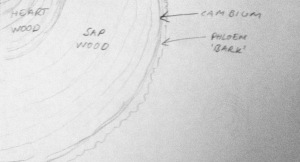
So instead, if you want to attach something to a tree, it’s way better to drill trough it. Then the tree is able to close off around the new object and the wood around it grows every year, making the attachment more stable.
Well to sum this up, it was a great weekend and I hope to meet all those arbgirls soon again, to learn more from each other. Thanks to everyone, and especially to Boel, Veronika, Joe, Spike, Roti and Daniel how helped me with the trip and the workshop. And to Louise off cause who made an unbelievable great work arranging this, thanks!
(If you want to go to next women’s arbcamp, check out the group women in trees at Facebook.)






